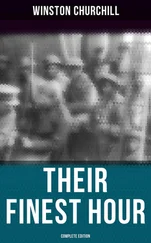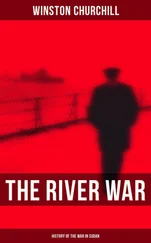Winston Churchill - Ian Hamilton's March
Здесь есть возможность читать онлайн «Winston Churchill - Ian Hamilton's March» весь текст электронной книги совершенно бесплатно (целиком полную версию без сокращений). В некоторых случаях можно слушать аудио, скачать через торрент в формате fb2 и присутствует краткое содержание. Год выпуска: 2018, Издательство: epubBooks Classics, Жанр: История, Прочая документальная литература, на английском языке. Описание произведения, (предисловие) а так же отзывы посетителей доступны на портале библиотеки ЛибКат.
- Название:Ian Hamilton's March
- Автор:
- Издательство:epubBooks Classics
- Жанр:
- Год:2018
- ISBN:нет данных
- Рейтинг книги:4 / 5. Голосов: 1
-
Избранное:Добавить в избранное
- Отзывы:
-
Ваша оценка:
- 80
- 1
- 2
- 3
- 4
- 5
Ian Hamilton's March: краткое содержание, описание и аннотация
Предлагаем к чтению аннотацию, описание, краткое содержание или предисловие (зависит от того, что написал сам автор книги «Ian Hamilton's March»). Если вы не нашли необходимую информацию о книге — напишите в комментариях, мы постараемся отыскать её.
London to Ladysmith
Ian Hamilton's March — читать онлайн бесплатно полную книгу (весь текст) целиком
Ниже представлен текст книги, разбитый по страницам. Система сохранения места последней прочитанной страницы, позволяет с удобством читать онлайн бесплатно книгу «Ian Hamilton's March», без необходимости каждый раз заново искать на чём Вы остановились. Поставьте закладку, и сможете в любой момент перейти на страницу, на которой закончили чтение.
Интервал:
Закладка:
Ian Hamilton's March
Winston Churchill
Preface
This book is a continuation of those letters to the Morning Post newspaper on the South African war, which have been lately published under the title 'London to Ladysmith via Pretoria.' Although the letters had been read to some extent in their serial form, their reproduction in a book has been indulgently regarded by the public; and I am encouraged to repeat the experiment.
The principal event with which the second series deals is the march of Lieutenant–General Ian Hamilton's column on the flank of Lord Roberts's main army from Bloemfontein to Pretoria. This force, which encountered and overcame the brunt of the Boer resistance, which, far from the railway, marched more than 400 miles through the most fertile parts of the enemy's country, which fought ten general actions and fourteen smaller affairs, and captured five towns, was, owing to the difficulties of telegraphing, scarcely attended by a single newspaper correspondent, and accompanied continuously by none. Little has therefore been heard of its fortunes, nor do I know of anyone who is likely to write an account.
The letters now submitted to the public find in these facts their chief claim to be reprinted. While written in the style of personal narrative I have hitherto found it convenient to follow, they form a complete record of the operations of the flank column from the day when Ian Hamilton left Bloemfontein to attack the Waterworks position, until he returned to Pretoria after the successful engagement of Diamond Hill.
Although in an account written mainly in the field, and immediately after the actual events, there must be mistakes, no care has been spared in the work. The whole book has been diligently revised. Four letters, which our long marches did not allow me to finish while with the troops, have been added and are now published for the first time. The rest have been lengthened or corrected by the light of after–knowledge and reflection, and although the epistolary form remains, I hope the narrative will be found to be fairly consecutive.
I do not want the reader to think that the personal incidents and adventures described in this book are extraordinary, and beyond the common lot of those who move unrestricted about the field of war. They are included in the narrative, not on account of any peculiar or historic interest, but because this method is the easiest, and, so far as my wit serves me, the best way of telling the story with due regard at once to detail and proportion.
In conclusion I must express my obligations to the proprietors of the Morning Post newspaper for the assistance they have given my publishers in allowing them to set up the copy as each letter arrived from the war; to the DUKE OF MARLBOROUGH, to whom I am indebted for the details of the strength and composition of the force which will be found in the Appendix, and for much assistance in the attempt to attain accuracy; and thirdly, to MR. FRANKLAND, whose manly record of the heavy days he passed as a prisoner in Pretoria may help to make this book acceptable to the public.
WINSTON SPENCER CHURCHILL.
LONDON: September 10, 1900.
Maps and Plans
Operations in the Orange Free State, April, 1900
Diagram Explaining Hamilton's Action at Israel's Poorte, the 25th of April
Diagram Explaining French's Operations Round Thabanchu, the 25th and 27th of April
Diagram Explaining the Action of Houtnek
Diagram to Explain the Passage of the Sand River, 10th of May, 1900
Ian Hamilton's Action at the Sand River, 10th of May, 1900
Ian Hamilton's Action before Johannesburg
Plan of the Operations of 11th and 12th of June, 1900
Diagram Explaining the Action of Diamond Hill
Map of March from Bloemfontein to Pretoria At end of book
Chapter I
A Roving Commission
In the train near Pieters, Natal: March 31.
Ladysmith, her garrison and her rescuers, were still recovering, the one from the effects of long confinement, the other from over–exertion. All was quiet along the Tugela except for the plashing of the waters, and from Hunger's Poorte to Weenen no sound of rifle or cannon shot disturbed the echoes.
The war had rolled northward: the floods of invasion that had isolated—almost overwhelmed—Ladysmith and threatened to submerge the whole country had abated and receded, so that the Army of Natal might spread itself out to feed and strengthen at its leisure and convenience on the reconquered territory.
Knox's (Ladysmith) Brigade went into camp at Arcadia, five miles west of the town. Howard's (Ladysmith) Brigade retired to the breezy plains south of Colenso. Clery's Division—for the gallant Clery, recovered from his sickness, had displaced the gallant and successful Lyttelton—moved north and encamped beyond Elandslaagte along the banks of Sunday's River. Hunter's Division was disposed with one brigade at Elandslaagte and one at Tinta Inyoni. Warren, whom it was no longer necessary to send to the Cape Colony, established himself and his two brigades north of Ladysmith, along the railway line to the Orange Free State. Brocklehurst, with the remnants of what had once been almost a Cavalry Division, and now could scarcely mount three squadrons, occupied a neighbouring plain, sending his regiments one by one to Colenso, or even Mooi River, to be re–horsed; and around all this great Army, resting after its labours and preparing for fresh efforts, the Cavalry brigades of Dundonald and Burn–Murdoch drew an immense curtain of pickets and patrols which extended from Acton Homes in the east, through Bester's Station right round to Wessels Nek and further still, and which enabled the protected soldiers within to close their eyes by night and stretch their legs by day.
Meanwhile, the burghers had all retreated to the Drakensburg and the Biggarsburg and other refuges, from which elevated positions they defied intrusion or attack, and their scattered line stretched in a vast crescent even around our widely extended front from the Tintwa Pass, through Waschbank to Pomeroy.
But with the exception of outpost skirmishes, wholly unimportant to those not engaged in them, a strange peace brooded over Natal, and tranquillity was intensified by the recollection of the struggle that was over and the anticipation of the struggle that impended. It was a lull in the storm.
All this might be war, but it was not journalism. The tempest for the moment had passed, and above the army in Natal the sky was monotonously blue. It was true that dark clouds hung near the northern horizon, but who should say when they would break? Not, at any rate, for three weeks, I thought, and so resolved to fill the interval by trying to catch a little of the tempest elsewhere.
After the relief of Ladysmith four courses offered themselves to Sir Redvers Buller. To stand strictly on the defensive in Natal and to send Lord Roberts every gun and man who could be spared; to break into the Free State by forcing Van Reenen's Pass or the Tintwa; to attack the twelve thousand Boers in the Biggarsburg, clear Natal, and invade the Transvaal through the Vryheid district; and, lastly, to unite and reorganise and co–operate with Lord Roberts's main advance either by striking west or north.
Which course would be adopted? I made inquiries. Staff officers, bland and inscrutable—it is wonderful how well men can keep secrets they have not been told—continued to smile and smile. Brigadiers frankly confessed their ignorance. The general–in–chief observed pleasantly that he would 'go for' the enemy as soon as he was ready, but was scarcely precise about when and where.
It was necessary to go to more humble sources for truth, and after diligent search I learned from a railway porter, or somebody like that, that all attempts to repair the bridge across the Sunday's River had been postponed indefinitely. This, on further inquiry, proved to be true.
Читать дальшеИнтервал:
Закладка:
Похожие книги на «Ian Hamilton's March»
Представляем Вашему вниманию похожие книги на «Ian Hamilton's March» списком для выбора. Мы отобрали схожую по названию и смыслу литературу в надежде предоставить читателям больше вариантов отыскать новые, интересные, ещё непрочитанные произведения.
Обсуждение, отзывы о книге «Ian Hamilton's March» и просто собственные мнения читателей. Оставьте ваши комментарии, напишите, что Вы думаете о произведении, его смысле или главных героях. Укажите что конкретно понравилось, а что нет, и почему Вы так считаете.











